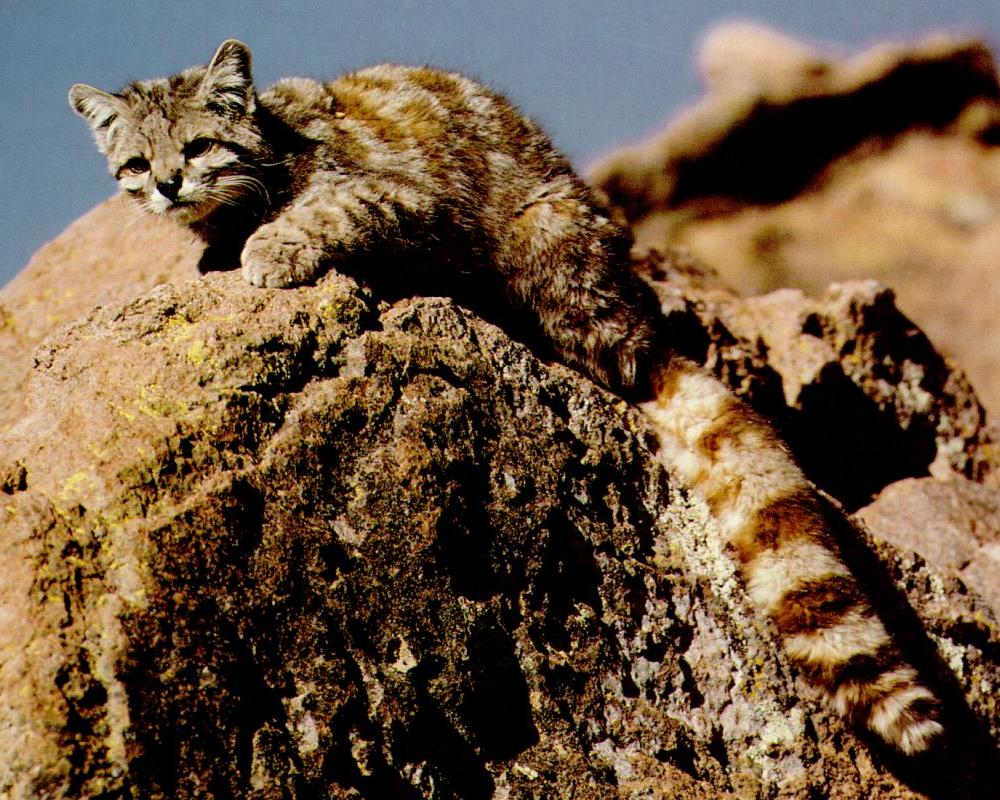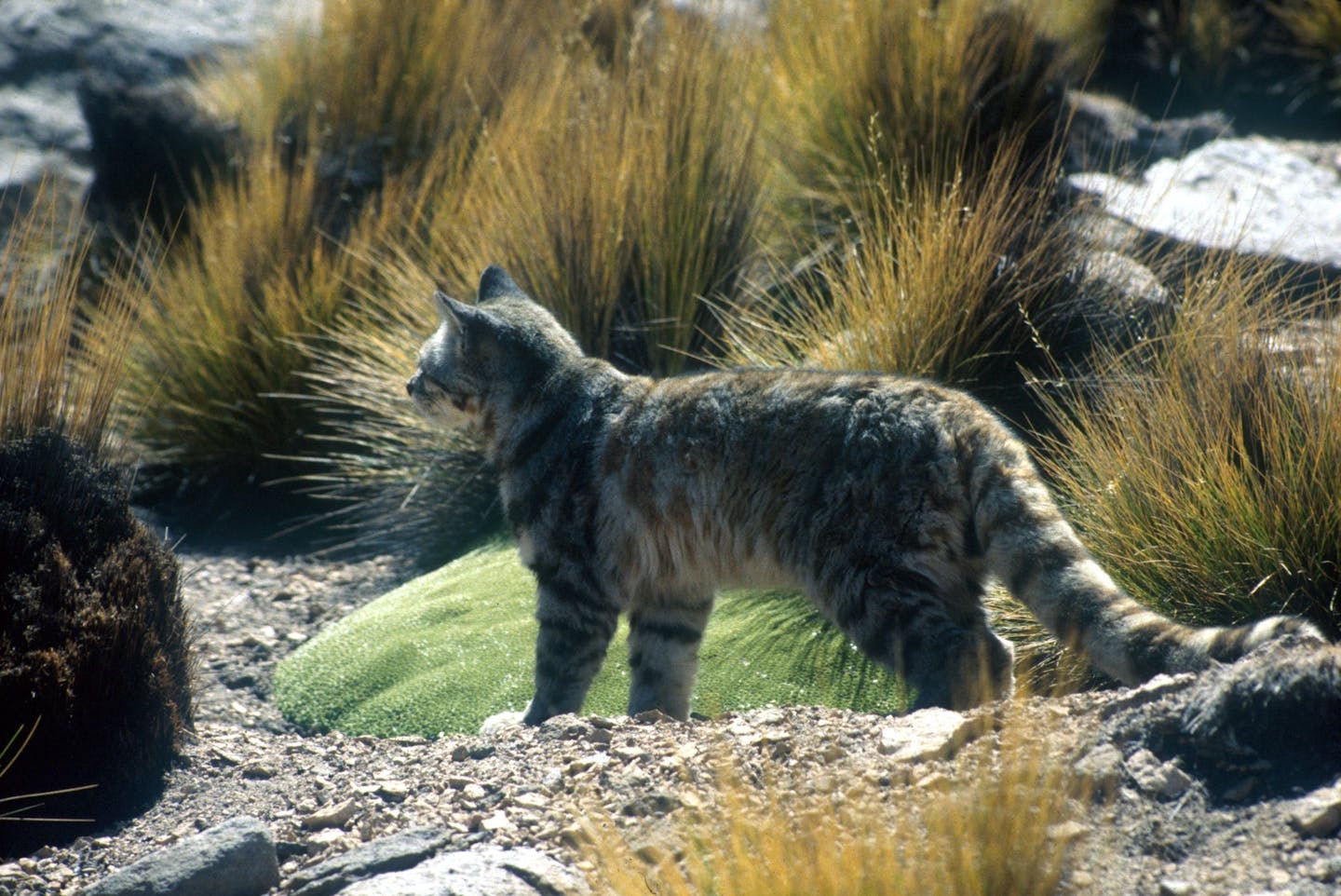Andean mountain cat: one of the world’s most endangered felines
- Nature Conservation
- Land Conservation
- Iconic Species
- Wildlife
- Mammals
- Andes Mountains & Pacific Coast
- Southern America Realm
One Earth’s “Species of the Week” series highlights an iconic species that represents the unique biogeography of each of the 185 bioregions of the Earth.
A house-cat-sized wild feline with a puffy ringed tail longer than its body, that has rarely been spotted with human eyes… must be a Jim Henson creation, something out of The Labyrinth.
Actually, though, the Andean mountain cat is one of the world’s most endangered wild cats and one of South America’s rarest felids. It is also one of the least known. With many similarities to the more common South American Pampas cat, separate studies have been rare as well.
A 2016 study published on the IUCN red list counted only 1,378 adults in existence, with the small cats scattered over more than 600,000 square miles of highlands from northeastern Peru to Patagonia.
Estimating the population numbers for such a low-density species is an incredible challenge. The cats live in hard-to-reach areas, at elevations up to 12,000 feet.

The Andean cat is the Iconic Species of the Andean Mountain Grasslands Bioregion (NT5).
The small Andean cats — not much bigger than a house cat — are only found in the rocky arid and semi-arid zones of the Andes where valleys of patchily distributed rock walls are the preferred habitat. Rock piles and boulders are the only types of cover available at such altitudes, making the habitat of the Andean cat naturally fragmented.
Therefore, populations are not connected and are more vulnerable to further habitat fragmentation caused by mining, as their habitat is rich with deposits of coal, oil, and minerals such as tin, silver, and gold.
Most of the reported Andean cat sightings (of which there are few) have been during the daytime, although studies through camera traps and observations of a radio-collared animal indicate their activity is mainly at night or dawn and dusk.

Image credit: Creative Commons
The Andean mountain cat has an ashy-gray fur, a gray head, ears, and face, with brown patchy stripes running horizontally across its back. Its long bushy tail has 6–9 rings, which are dark brown to black. The markings of juveniles are darker and smaller than those of adults.
Its lips and cheeks are surrounded in puffy white fur. Two dark brown lines run from the corners of the eyes across the cheeks, like some kind of war paint.
Its magnificent tail is about 70% as long as its body length.
The Andean mountain cat is often hunted for food and traditional medicine, as well as for its fur. Stuffed specimens are sometimes used for spiritual ceremonies, as the Andean cat is considered sacred to Indigenous communities and associated with rich harvests and an abundance of livestock.
Since 1999, the Alianza Gato Andino (Andean Cat Alliance) has been spearheading conservation efforts in all range countries. In 2004 the Andean Cat Conservation Action Plan began compiling and organizing the existing information on the Andean cat, including listing protected areas where Andean cat presence is confirmed or suspected.
Local community engagement is a primary concern for the Andean Cat Alliance, to tie traditional cultural reverence for the cat with conservation education.
Explore Earth's Bioregions
.png?auto=compress%2Cformat&w=200)

